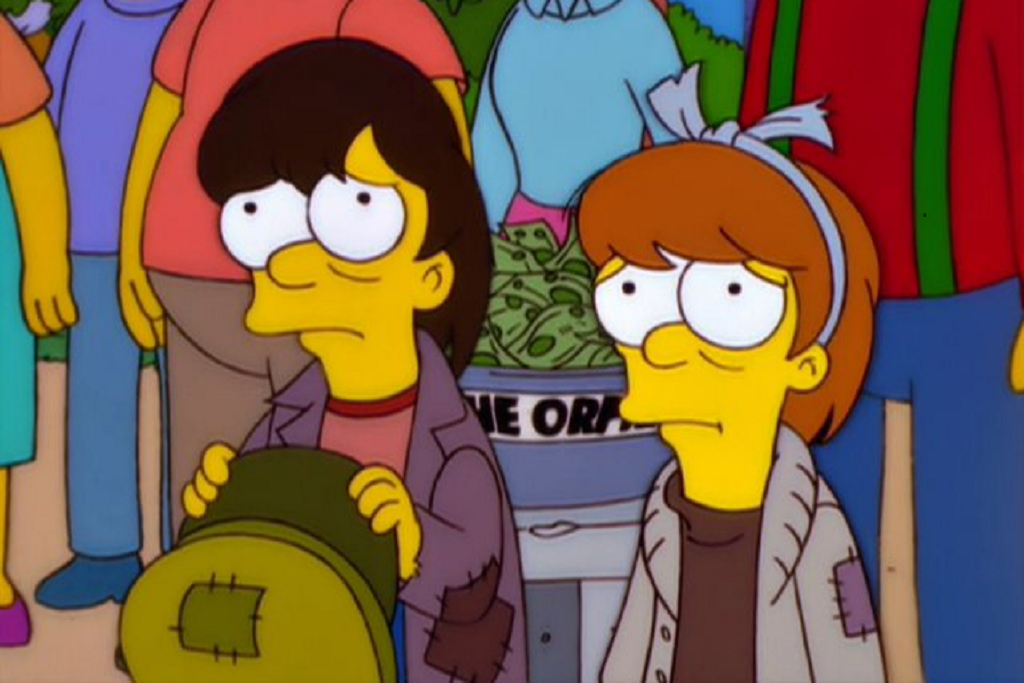Australia Continues To Be The Lucky Country, So Why Aren’t Young People Getting Their Share?
Why are Australians – particularly young people – feeling less wealthy?


Junkee Media’s annual unconference brings together Australia’s best and brightest young minds to inspire, innovate, and improve the world.
Eliza Owen is an economic researcher and commentator. You may recognise her as a regular economic commentator on FBI Radio, a guest speaker on triple j’s Hack, 702 ABC Radio, Sky News and at TEDxYouth Sydney… and that’s just the beginning.
Eliza, along with hundreds of other inspiring young Aussies, will be a delegate at Junket 2017. In the lead up to our annual unconference, we asked her to break down why young people in Australia are feeling economically disadvantaged.
Australia Hasn’t Had A Recession Since 1991
Australia’s economy since the 2008 global financial crisis is like a lucky animal falling from a tree: while major economies plunged into recession, Australia hit a bunch of branches on the way down which broke the fall.
First, the mining boom. An industrialising China demanded unprecedented levels of coal and iron ore from Australia to fuel rapid growth. While purses tightened around the world, disposable incomes in Australia increased by 13 percent between 2003 and 2013 as a result of the mining boom.
Once the iron ore price went bust in 2014, some slack in the economy was picked up by the housing boom, concentrated in the south-east of Australia.
Now that growth in housing markets is finally starting to decline, Victoria and New South Wales have lucked out again, on the cusp of an infrastructure boom.
So if the Australian economy has cheekily avoided recession for quite a while, why are Australians — particularly young people — feeling less wealthy?
Housing Affordability
I’m sure you’re sick of hearing about housing affordability (I, for one, have done a lot of ranting about it). It’s a complex issue but let’s break it down.
While global demand fell in the wake of the financial crisis, and the iron ore price went bust in Australia, our Reserve Bank lowered the cash rate to record lows. This made money cheaper to borrow than it had ever been.
It was hoped that if money was cheap, businesses would keep investing, and keep hiring new people to grow the Australian economy. Instead, the cheap money was used to buy dwellings. Sydney and Melbourne housing, in particular, was like a mythical unicorn in the post-GFC, post-mining boom environment: unlike other investment classes, it was growing strong.
The housing boom drastically widened the gap between the haves and have-nots.
If you own a home outright in one of these cities, you’re laughing. However, non-home owners, including many young Australians, missed out on this growth. The housing boom drastically widened the gap between the haves and have-nots.
It also means that young people trying to get into the market have to save a lot more for a deposit. As mortgage rates for investors increase, more pressure may fall on renters to help landlords repay their hefty mortgages.
Stagnant Wages And Higher Costs Of Living
Housing isn’t the only thing that is costing us more. The Australian Bureau of Statistics (ABS) wage price index, which measures the change in wages across Australia, grew 1.9 percent in the year to June. This is one of the lowest growth rates on record since the index started in 1998.
In the last five years, Australian wages increased by 2.5 percent a year on average. But some components of spending grew faster – things such as medical, hospital and dental care prices (6 percent), electricity prices (5.1 percent) and the price of tertiary education (4.4 percent).
Clearly, there is money coming in… but why isn’t it reflected in our incomes?
These expenses are hard to ‘cut back’ on. Unlike your daily dose of smashed avo, it’s hard to avoid the dentist when you need it. It’s hard to live in darkness, like some kind of sexy millennial vampire, to save on your electricity bill.
Rather than bargaining for higher wages, Australian seem to have been dipping into their savings to keep up with rising costs of living. The household savings ratio (which is the portion of savings to income across all households) is at 4.6 percent – less than half of what it was just 4 years ago.
Meanwhile, the aggregate GDP figures show that the Australian economy continues to grow. Clearly, there is money coming in… but why isn’t it reflected in our incomes? A lot of it has to do with our place in the labour force.
All Skilled Up With Nowhere To Go
Thanks to the ability to defer education fees, many school leavers now go to university. That’s not a bad thing.
However, when more people have an undergraduate degree, the qualification becomes less distinguishing. To gain competitive advantage, young people have to offer more skills, higher degree levels and unpaid experience to bargain for jobs. The 2015 Graduate Destinations survey found approximately 26 percent of surveyed graduates from a bachelor’s degree in Australia who wanted work full-time work had not managed to find it — four months after graduating.
To gain competitive advantage, young people have to offer more skills, higher degree levels and unpaid experience to bargain for jobs.
Simultaneously, the increase of small businesses throughout the 1990s also meant that fewer businesses had the resources to train people on the job and remain profitable. As businesses tightened their belts, and skilled young graduates became plentiful, this shifted the onus of training to the individual rather than the business. Hence the increased salience of the unpaid internship, and working for ‘exposure’ or ‘experience’ as opposed to money.
Theoretically, when there is a surplus of potential workers to fill vacancies, employers can offer lower wages.
Another big part of low wage growth is the high incidence of part-time work. The underemployment rate, which measures those who want to work more hours, but can’t get more hours for economic reasons, was at 9.1 percent in August – nearly 1 in 10 workers. Research from the Reserve Bank of Chicago also found links between casualisation of the workforce and low wages, with the possible explanation that part-time workers bargain for more hours as opposed to higher wages.
So, What Can We Do About It?
Economics has a history of being purposefully beige. This is designed to prevent markets being stirred into a frenzy, but it has the negative impact of keeping us out of the political conversation.
Thankfully, that is starting to change. Rockstar economist (and personal crush) Thomas Piketty has made many public appearances, arguing policies which target equal distribution of wealth are vital in setting the economy straight. Meanwhile, local legends like Cameron Murray are taking research further than academic journals, and are becoming politically active to make real change. We have to remain not only informed but active in the formation of economic policy.